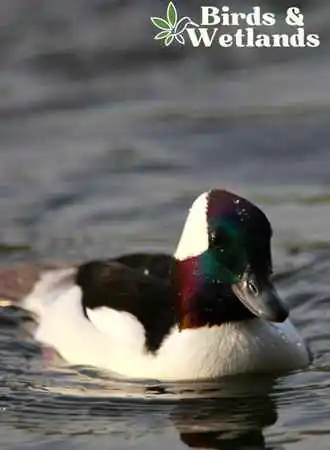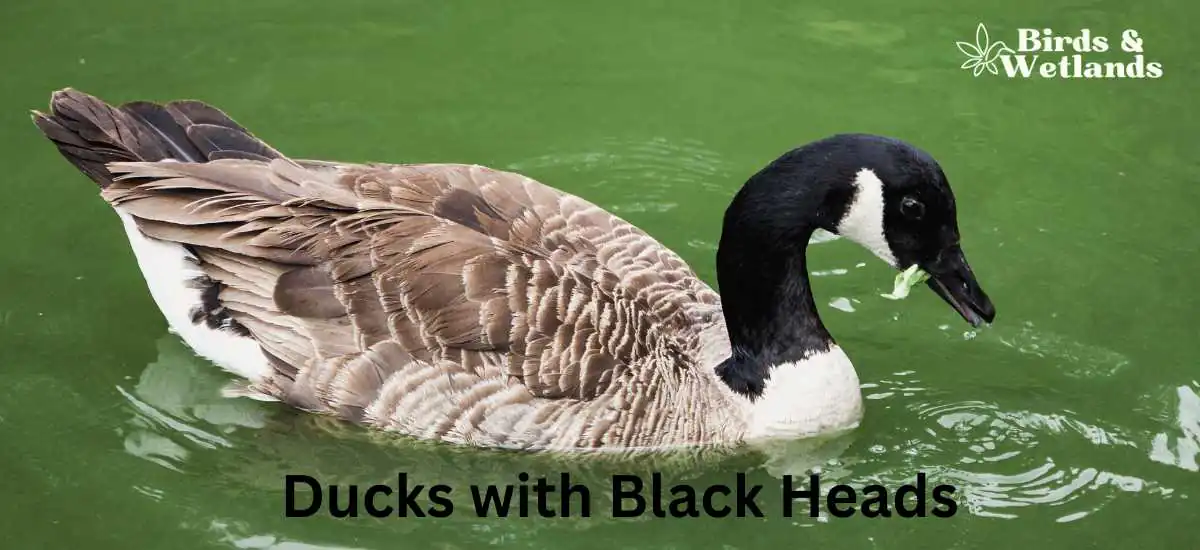Ducks are one of the most beloved creatures on the planet. With their charming waddles, soft quacks, and vibrant feathers, it’s hard not to love them.
However, one type of duck stands out from the rest, and that’s the ducks with black heads. These ducks are strikingly beautiful with their shiny black feathers and contrasting bright colors. But they’re not just pretty to look at; they also have a unique and fascinating history worth exploring.
In this blog post, we’ll take a closer look at these black-headed beauties, learn more about their characteristics, and discover why they have captured the hearts of many duck enthusiasts. So, get ready to quack up because we’re diving into the world of ducks with black heads!
Black-Headed Duck
Black-Headed Duck

- The black-headed duck is easily recognized by its distinct black and white coloring.
- These omnivores mainly eat aquatic plants and small invertebrates.
- They live in freshwater habitats like lakes, rivers, and marshes.
The black-headed duck (Heteronetta atricapilla) is a small diving duck native to South America.
It is easily recognized by its black head, white breast, white chin, gray back, and chestnut-colored flanks. The male and female have similar coloring, but the male is slightly larger and the female has a dark brown head. It is closely related to many stiff-tailed ducks, but lacks stiff tail.
Black-headed ducks are omnivores, eating mainly aquatic plants and small invertebrates like insects and crustaceans. They also eat small tadpoles. They dive underwater to forage, using their wings for swimming and their bill to probe the substrate.
These diving ducks live in the wetlands of South America, from Colombia and Ecuador in the north to Tierra del Fuego in the south. They prefer freshwater habitats like lakes, rivers, ponds, and marshes but can also occur in brackish wetlands near the coast. They are often found with lake ducks.
During the breeding season, black-headed ducks form monogamous pairs. They nest on the ground in a hidden spot near the water. The female lays around 4 to 8 eggs, which hatch after about a month. The ducklings are precocial and can swim and feed themselves soon after hatching.
Currently, the International Union for Conservation of Nature (IUCN) has listed the conservation status of black-headed ducks as “Least Concern.” Despite this, their population is decreasing due to habitat loss and degradation, hunting, and predation by introduced species such as the American mink. Wetland conservation and restoration efforts are crucial to protect the survival of these ducks.
Bufflehead
Bufflehead

- The bufflehead is a small, distinctive sea duck.
- It breeds in northern North America and winters in the south.
- It feeds on insects, crustaceans, and small fish and nests in tree cavities.
The bufflehead (Bucephala albeola) is a small sea duck in North America. With its striking black and white plumage, compact body, and unique head shape, the bufflehead stands out among other duck species.
The male bufflehead has a striking appearance, with a large white patch on the back of its head, glossy green and purple iridescence on its head and neck, and mostly white body.
In contrast, the female bufflehead has a more subdued brownish-gray plumage with a white cheek patch on the side of her head. Young or immature birds look similar to the females.
Both sexes have small bills and short necks, which make them well-suited for diving and swimming underwater.
Buffleheads are migratory birds that breed in northern North America and spend the winter in coastal and inland waterways in the southern United States and Mexico. They start their annual migrations in late October.
They are commonly found in small groups, often in shallow water near shorelines, where they feed on insects, crustaceans, and small fish in the non-breeding season.
Buffleheads keep the same mate for many years. Females nest in tree cavities often using Northern flicker holes but also use nests by other birds.
Common Goldeneye
Common Goldeneye

- Medium-sized diving duck
- Feeds on plants and aquatic invertebrates
- Breeds in borreal forests
The common goldeneye (Bucephala clangula) is a medium-sized diving duck found in North America and Europe.
Males have striking black and white plumage with a greenish-black head and a circular white patch between the eye and the beak. Females have a grayish-brown body with a chocolate head.
Common goldeneyes feed on aquatic invertebrates and are known for their ability to dive to great depths.
The common goldeneye is migratory bird that breeds in boreal forests and winters on open water, including coastal bays, estuaries, and lakes.
Key Takeaways
- The black-headed duck is named after its black head and is native to parts of Central and South America like central Chile.
- These ducks live in various habitats.
- These waterfowl primarily eat plants but will supplement their diets with small animals.

